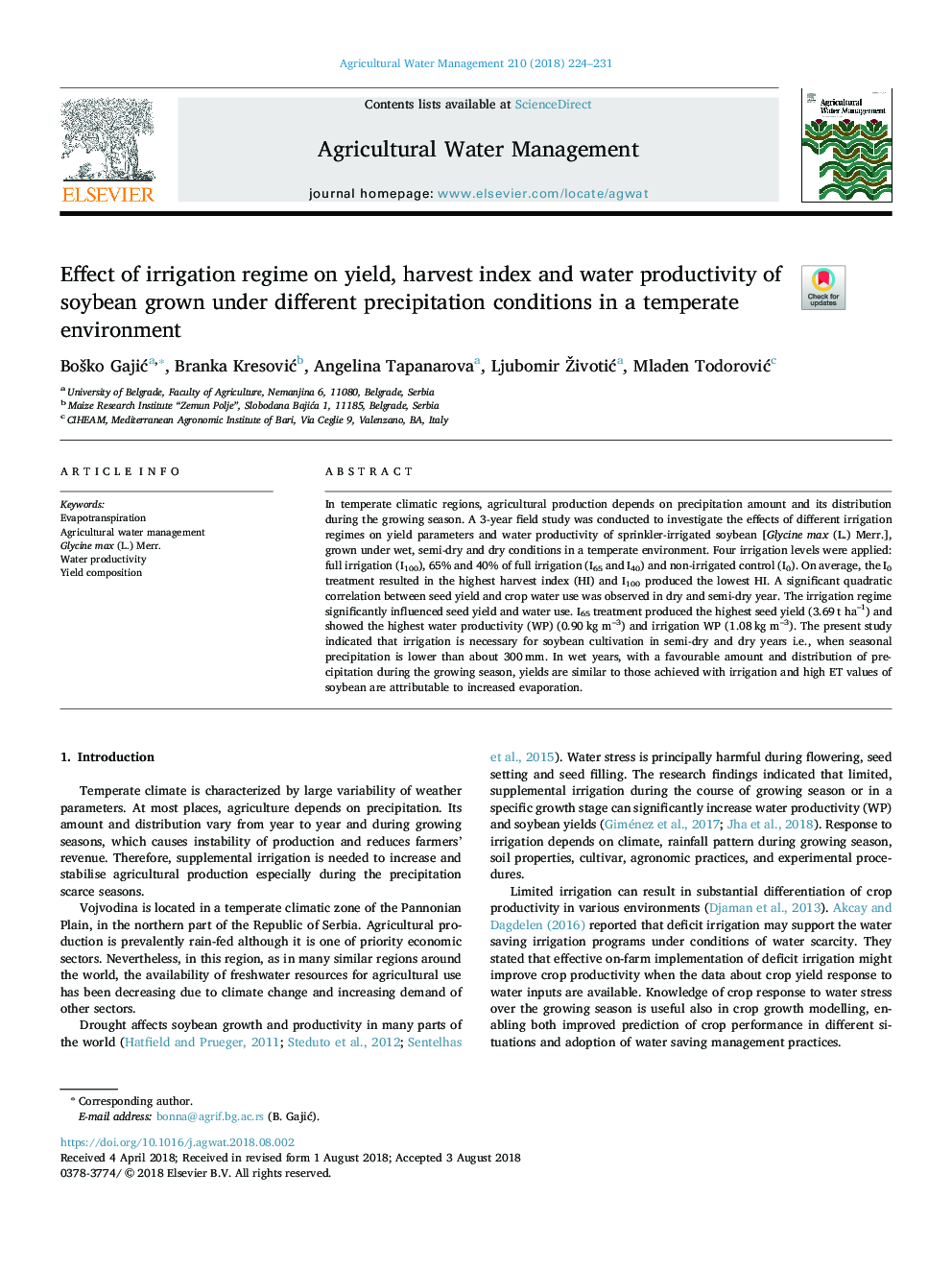| Article ID | Journal | Published Year | Pages | File Type |
|---|---|---|---|---|
| 8872730 | Agricultural Water Management | 2018 | 8 Pages |
Abstract
In temperate climatic regions, agricultural production depends on precipitation amount and its distribution during the growing season. A 3-year field study was conducted to investigate the effects of different irrigation regimes on yield parameters and water productivity of sprinkler-irrigated soybean [Glycine max (L.) Merr.], grown under wet, semi-dry and dry conditions in a temperate environment. Four irrigation levels were applied: full irrigation (I100), 65% and 40% of full irrigation (I65 and I40) and non-irrigated control (I0). On average, the I0 treatment resulted in the highest harvest index (HI) and I100 produced the lowest HI. A significant quadratic correlation between seed yield and crop water use was observed in dry and semi-dry year. The irrigation regime significantly influenced seed yield and water use. I65 treatment produced the highest seed yield (3.69ât ha-1) and showed the highest water productivity (WP) (0.90âkg m-3) and irrigation WP (1.08âkg m-3). The present study indicated that irrigation is necessary for soybean cultivation in semi-dry and dry years i.e., when seasonal precipitation is lower than about 300âmm. In wet years, with a favourable amount and distribution of precipitation during the growing season, yields are similar to those achieved with irrigation and high ET values of soybean are attributable to increased evaporation.
Related Topics
Life Sciences
Agricultural and Biological Sciences
Agronomy and Crop Science
Authors
BoÅ¡ko GajiÄ, Branka KresoviÄ, Angelina Tapanarova, Ljubomir ŽivotiÄ, Mladen TodoroviÄ,
